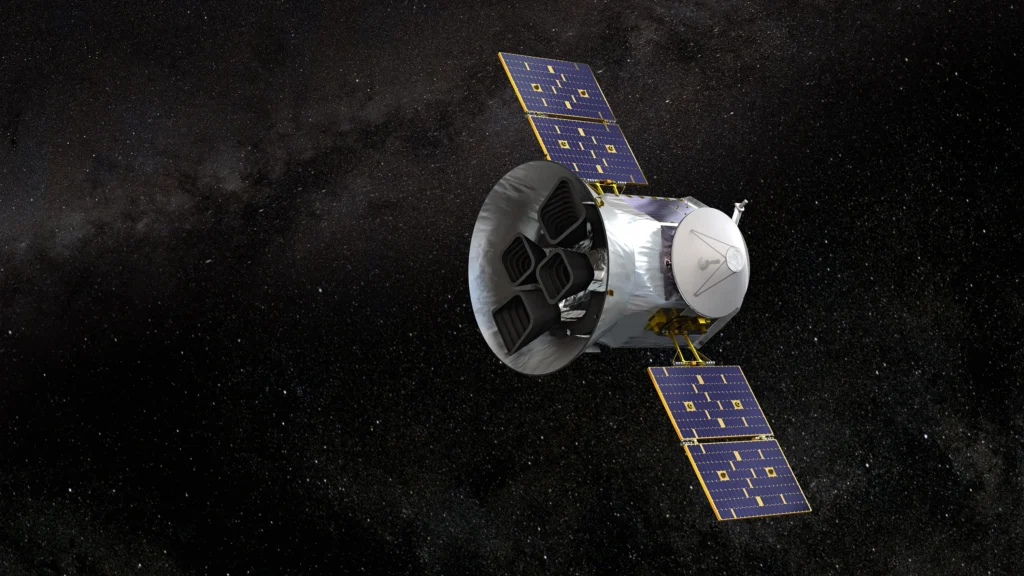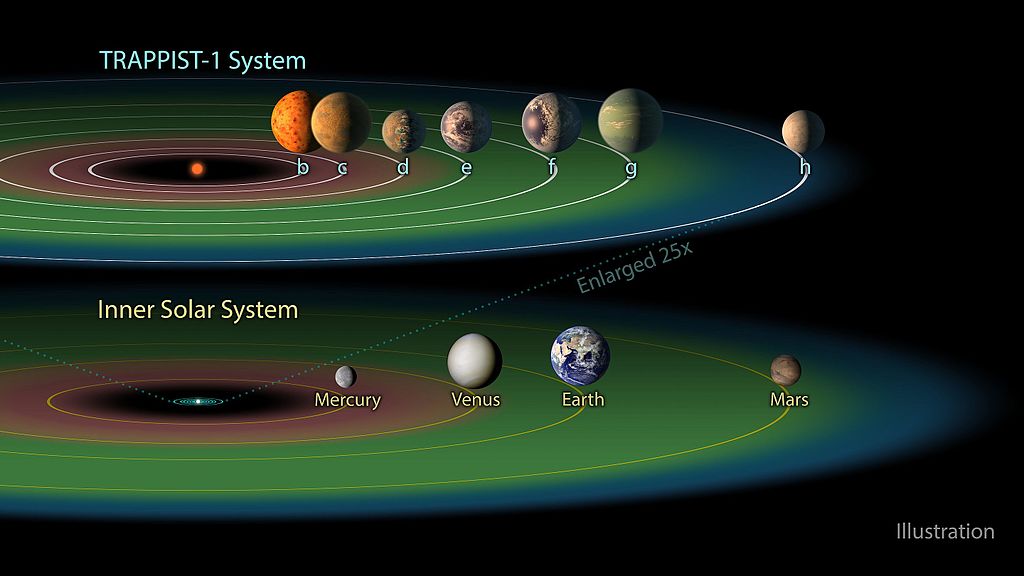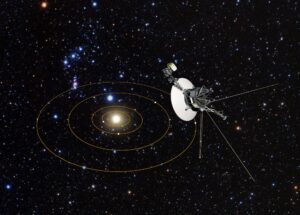As the human gaze extends beyond the confines of our own solar system, the hunt for exoplanets—or planets orbiting stars other than the Sun—continues to captivate and intrigue both astronomers and the public alike. This relentless search not only reshapes our understanding of the cosmos but also fuels the profound question: are we alone, or does alien life thrive on distant worlds?
 Pin
Pin Table of Contents
The Dawn of Exoplanet Discovery
The first confirmed discovery of an exoplanet orbiting a sun-like star dates back to 1995, when astronomers Michel Mayor and Didier Queloz detected 51 Pegasi b, a gaseous giant. This groundbreaking moment represented a pivotal shift in astronomical research and paved the way for an era of exoplanet exploration. Since then, the field has seen an explosion of discoveries, thanks to sophisticated telescopes and dedicated missions like NASA’s Kepler and the Transiting Exoplanet Survey Satellite (TESS).
 Pin
Pin Image Credit: NASA
Cutting-Edge Detection Methods
Key to this expansion in knowledge are the innovative techniques used to spot these distant planets. The primary methods are radial velocity, which detects wobbles in a star’s movement due to gravitational tugs, and transit photometry, which observes the dimming of a star’s light as a planet crosses in front. Both methods have proven remarkably effective, unveiling a diverse array of exoplanets that range from hot Jupiters to rocky Earth-like worlds.
The Number of Known Exoplanets Soars
Today, the number of confirmed exoplanets stands in the thousands and is consistently growing. This burgeoning atlas of new worlds hints at a universe teeming with planets. Indeed, statistical estimates suggest that every star in the Milky Way might host at least one planet, making the potential for alien life seem more plausible than ever before.
Habitable Zones and Life's Potential
 Pin
Pin Image from: Wikipedia
Central to the quest is the search for planets within the “habitable zone,” or the Goldilocks zone—regions around stars where conditions might be just right for liquid water, a crucial ingredient for life as we know it. Discoveries such as the TRAPPIST-1 system, where several Earth-sized planets reside in the host star’s habitable zone, raise hopes and discussions about the possibility of life-sustaining environments.
Chemical Fingerprints: Signs of Life?
Advancements in spectrometry have allowed us to analyze the atmospheric composition of some exoplanets, looking for chemical signatures that might indicate biological processes. Identifying the presence of molecules like oxygen, methane, or even water vapor can provide tantalizing clues about the planets’ potential to harbor life.
Echoes of the Dinosaur Age: Cornell Astronomers Utilize Ancient Earth to Refine Alien Life Detection
The study conducted by astronomers at Cornell University unravels a fascinating perspective on exoplanet exploration. They have delved into Earth’s own history, particularly the age when dinosaurs roamed the planet, to ascertain clues that could improve the detection of life beyond our solar system.
During the Phanerozoic Eon, which spans the last 540 million years and includes the period when dinosaurs existed, Earth’s atmospheres have undergone significant changes. The Cornell team focused on the transmission spectra—the ‘light fingerprint’ of a planet, which is essentially the pattern of starlight colors absorbed and transmitted by a planet’s atmosphere. This spectral data provides scientists with the ability to infer the composition of an atmosphere from afar.
By reconstructing atmospheric conditions of ancient Earth, specifically from the Mesozoic Era 100 to 300 million years ago, the researchers observed that the presence of life could have been more easily spotted from space. During this period, Earth’s oxygen levels were particularly elevated, which, along with methane levels, created a distinctive biosignature—a combination of gases in the atmosphere that may indicate the presence of biological activity.
The study highlights two notable gas pairs: oxygen and methane, and ozone and methane. On Earth, these are produced predominantly by biological processes, and their simultaneous presence could be indicative of life. They are also considered strong biosignatures when searching for extraterrestrial life. The models suggest that the interplay between high levels of oxygen and the simultaneous presence of methane created an enhanced signal stronger than what we would expect from modern Earth’s atmosphere.
This discovery is revolutionary because the current model for seeking life on exoplanets largely relies on understanding Earth’s current atmospheric conditions. By expanding this model to include past Earth conditions, especially periods with distinct and detectable biosignatures, the search for extraterrestrial life can be refined.
The atmospheric snapshot from the dinosaur era on Earth presents a new spectrum template for scientists. This can guide the interpretation of data from telescopes peering at distant exoplanets. Modern telescopes, like the James Webb Space Telescope, could utilize these ancient Earth models to better discriminate between life-bearing planets and those that are uninhabitable.
While the reign of the dinosaurs ended abruptly due to a catastrophic event, the atmospheric signature from their time could illuminate the path to discovering life on other worlds. Cornell University’s research not only provides a nostalgic glimpse of our planet’s lush past but also arms astronomers with a tangible record to calibrate their search for life across the galaxy, using the clues preserved from an era ruled by giants.
Understanding Through the Past: How the Dinosaur Era's Atmosphere Could Guide Our Search for Life Beyond Earth
The age of dinosaurs is a window into Earth’s ancient atmospheric composition—a mixture with higher levels of carbon dioxide than today. This thick, greenhouse gas-rich air was instrumental in maintaining a warm climate that stretched from the equator to the poles, allowing dinosaurs to thrive.
Such atmospheric conditions might seem foreign to us now, yet they provide a blueprint for the kind of worlds we might seek in the cosmos. Exoplanets—planets orbiting stars beyond our solar system—are numerous, but detecting which ones might harbor life requires discernment. Many of these worlds may have environments similar to Earth during the Mesozoic era, and understanding that era’s climate and atmospheric dynamics can provide vital insights.
Satellite-based telescopes like the James Webb Space Telescope have the capability to analyze the atmospheres of these distant worlds. By looking for signs of greenhouse gases, and the potential biosignatures they might carry or support, we can refine our search for life.
The Mesozoic atmosphere also offers a natural laboratory for studying how plants and animals adapt to high levels of carbon dioxide. Today’s rising CO2 levels due to human activity are a concern, but the past shows life can adapt over long periods to such conditions. Therefore, planets with CO2-rich atmospheres shouldn’t be excluded in the hunt for life—they might just be the kind of resilient worlds where life can flourish against the odds.
Combining the fossil record with state-of-the-art technology empowers scientists to piece together the puzzle of life’s potential beyond Earth. By blending paleoclimate data with current astrobiological research, we enhance our understanding and set a path to uncovering whether we are truly alone in the universe or if life—as it did with the dinosaurs—finds a way to survive and evolve in diverse and challenging conditions.
Deciphering Earth's Ancient Atmospheric Clues to Discover Complex Life on Exoplanets
Understanding Earth’s atmospheric evolution provides a blueprint for spotting biosignatures – indicators of life – on distant exoplanets. This pursuit took an intriguing turn with the work led by Rebecca Payne and Lisa Kaltenegger at the Carl Sagan Institute. Their research delves into how ancient Earth, with its teeming life, may have had an atmospheric signature even more conducive to showcasing a planet brimming with biology.
The study spans the Phanerozoic Eon, covering the last 542 million years of Earth’s history. Intriguingly, it targets a handful of 100-million-year periods that encapsulate significant biological changes. Each phase marked transformative shifts in Earth’s biosphere and atmosphere – from the advent of land plants to the age of dinosaurs.
Utilizing climate models like GEOCARB and COPSE, the team reconstructed atmospheric compositions across these distinct epochs. This reveals how increases in oxygen, resultant from burgeoning ecosystems, might have tweaked Earth’s atmospheric signature – its spectral fingerprint observable from afar.
The idea is that if we understand how Earth’s atmospheric signature has varied, we gain insight into what to look for when examining exoplanets. The key takeaway from the research is that Earth’s historical spectra were potent in displaying signs of complex life. That’s because as forests and larger organisms flourished, they altered the atmospheric chemistry in ways that would be detectable from space.
Payne emphasises the importance of this window – it embodies the era where life morphed from simple structures to sophisticated, diversified forms. The implication is compelling: if we can spot similar atmospheric traits in exoplanets, it may signal that we’re looking at worlds where not just life, but complex life, exists.
In essence, Earth’s past ‘light fingerprints’ may be more pronounced than what we see in our present atmosphere. This expanded palette offers a diverse set of benchmarks for biosignature searches, boosting our chance to identify not just microbial life but also potentially more evolved organisms.
By peering back through geological time, we adapt our search for extraterrestrial life. We use Earth’s history as a guide, considering not just how life might imprint on a planet today, but how it’s possibly showcased itself over the sweep of time – making the quest for discovering life elsewhere in the cosmos a little bit easier and perhaps a bit more hopeful.
Peering Into the Past: Models Illuminate Search for Exoplanet Life in Earth's Phanerozoic Mirror
The quest to uncover the mysteries of life beyond our solar system has taken an enlightening turn through the work of researchers like Payne and Kaltenegger. They’ve provided groundbreaking models that serve as cosmic windows through which we can view potential exoplanet backgrounds reminiscent of Earth’s Phanerozoic eon—an era teeming with life.
Kaltenegger’s work has been instrumental in envisioning faraway worlds with different geological, climatic, and atmospheric conditions. These comprehensive models act as benchmarks or ‘ground truths’ that equip us with a clearer understanding of where and how to spot signs of life elsewhere. By studying Earth’s robust timeline, researchers have developed a keen eye for the subtleties that could point to life on other planets.
To our increasing excitement, telescopes like the James Webb Space Telescope are on the cusp of being able to analyze atmospheres of rocky planets situated in the Goldilocks zone—the not-too-hot, not-too-cold regions around stars where liquid water, a critical ingredient for life as we know it, might flow freely. With about 35 of these exoplanets discovered to date, the potential for breakthroughs is tantalizing.
However, the technology is only as useful as our knowledge of what constitutes a signature of life. Herein lies the significance of Payne and Kaltenegger’s models. They propose that exoplanets with atmospheres rich in oxygen, similar to Earth during the Phanerozoic, may be the best candidates for life-searching missions.
Entertaining the possibilities, albeit theoretical at this stage, these models go one step further. They suggest that planets with oxygen levels around 30%—higher than current levels on Earth—could support not just simple microbial life but an ecosystem bustling with large and diverse organisms, akin to the dinosaurs of Earth’s past. This raises the prospect of not only finding life but discovering complex life, which for scientists is an electrifying prospect.
Payne articulates the potential of these revelations, illuminating a path to where alien life might be thriving. The assumptions built into these models—specifically about oxygen levels and corresponding biosignatures—allow researchers to hone in on exoplanets of greatest interest with more precision than ever before.
In terms of detectability, the unique ‘light fingerprint’ of an exoplanet enriched with oxygen might be more discernible from great distances than that of a planet like modern Earth. Thus, finding planets with excess oxygen could considerably ease the search for extraterrestrial life.
Kaltenegger notes the optimistic edge of their findings. The discovery of such planets could mean not just unveiling new forms of life but perhaps stumbling upon ecosystems as fascinating as our own prehistoric Earth. The prospect of discovering ‘other dinosaurs’ out there adds a level of wonder and excitement to the scientific pursuit, making the exploration of exoplanets not just a search for life, but an adventure into the realm of the unknown.
The Future of Exoplanet Exploration
Building on the successes of past missions, future telescopes such as the James Webb Space Telescope (JWST) and the European Extremely Large Telescope (E-ELT) promise to revolutionize our understanding even further. These will offer unprecedented views, potentially allowing scientists to observe exoplanet atmospheres in detail and detect biosignatures—the chemical indicators of life.
The pursuit of exoplanets has become one of the most dynamic and exciting areas of modern astronomy. As technology advances and new discoveries unfold, we edge closer to answering the age-old question: does life exist elsewhere in the universe? With stakes this high, the hunt for exoplanets is not just a scientific endeavor—it’s a journey that speaks to the core of human curiosity, driving us to explore the unknown reaches of our galaxy and beyond.
FAQs: The Fascinating Quest for Exoplanets: Unlocking the Secrets of Alien Worlds
An exoplanet is a planet that orbits a star outside our solar system. These distant worlds range in size from larger than Jupiter to smaller than Earth, and they can be found in various environmental conditions.
Scientists primarily use two methods: the transit method, where a planet’s passage in front of its star slightly dims the star’s light, observable by telescopes; and the radial velocity method, where a planet’s gravitational influence on its star causes measurable Doppler shifts in the star’s spectrum.
A potentially habitable exoplanet is one that could have conditions suitable for life as we know it. This generally means the planet is at a distance from its star where liquid water can exist—a region often referred to as the ‘Goldilocks zone.’
Yes, but it is challenging. Most exoplanets are discovered through indirect methods like transit observations, which detect their effects on host stars. Direct imaging is rare and is typically reserved for large planets orbiting far from their stars.
Oxygen is a potential biosignature gas because on Earth it is primarily produced by biological processes. If high levels of oxygen or its photochemical byproduct ozone are detected in an exoplanet’s atmosphere, it might indicate the presence of photosynthetic organisms.
The JWST will use its advanced instruments to analyze the chemical composition of exoplanetary atmospheres through spectroscopy, which can reveal the presence of molecules such as water vapor, methane, carbon dioxide, and potentially, signatures of biological activity.
Several exoplanets have been identified in their star’s habitable zone and possess characteristics that could support life. However, whether they actually do is still unknown and a subject of ongoing research.
Super-Earths are exoplanets with a mass larger than Earth’s but smaller than that of ice giants like Neptune. Mini-Neptunes are smaller versions of gas giants, with thick atmospheres and potentially rocky cores. Both types could provide insights into the diversity of planetary systems.
With current spaceflight technology, traveling to an exoplanet is not feasible. The closest known exoplanet is about 4 light-years away, which would take tens of thousands of years to reach with today’s spacecraft.
Agencies like NASA and ESA are planning future missions, such as the ARIEL space telescope for characterizing exoplanet atmospheres, and the PLATO mission, aimed at discovering and analyzing Earth-like exoplanets around nearby stars.
































